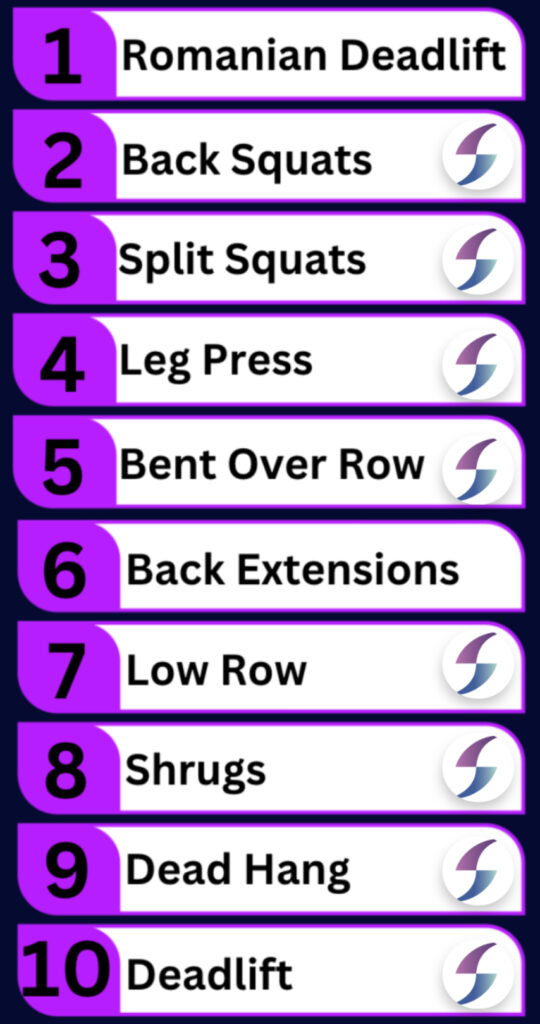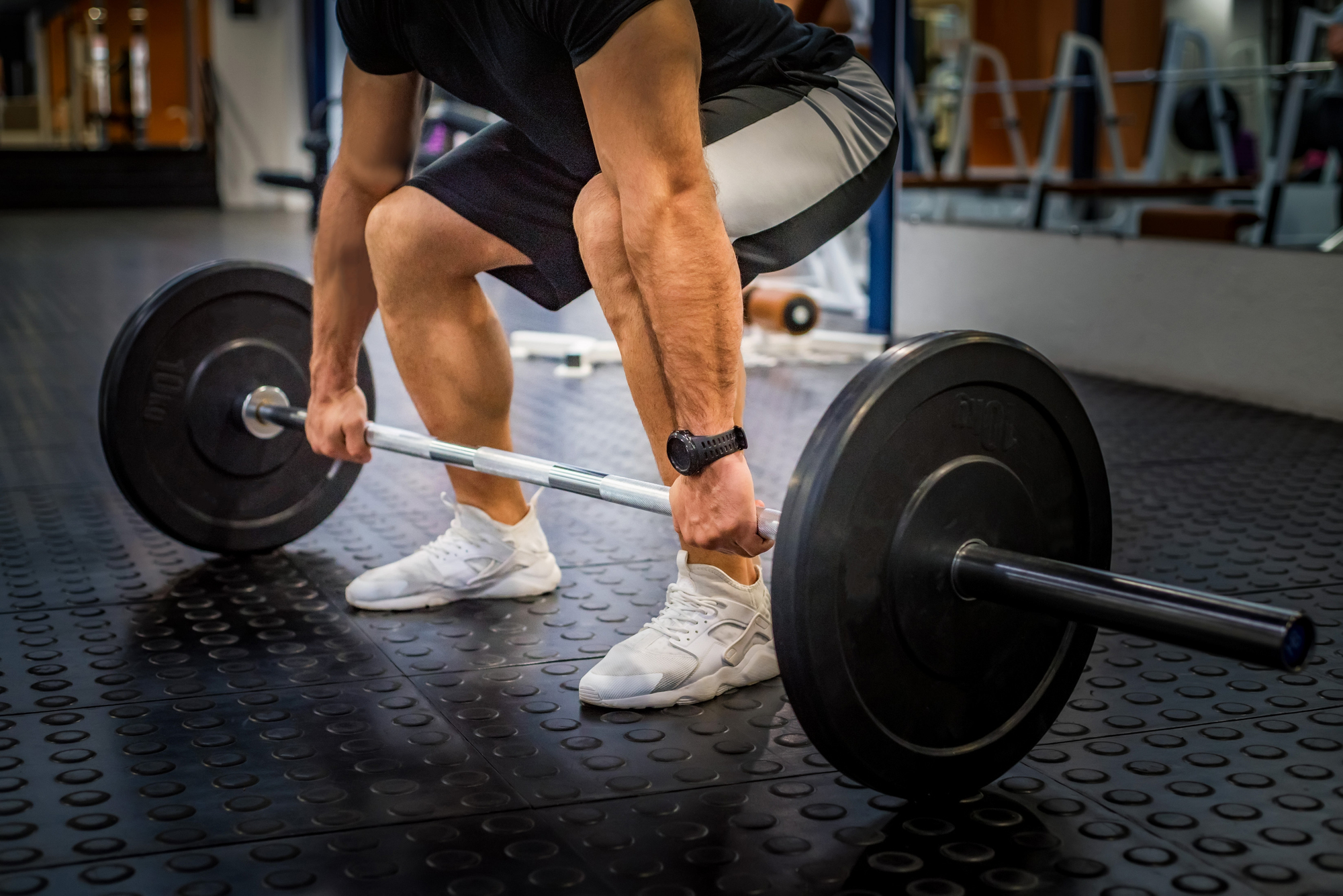Performing Accessory Exercises to Improve Your Deadlift
The deadlift is a powerful strength training exercise that engages many muscles, primarily the glutes, hamstrings, and lower back including the erector spinae[1]. It also uses the traps, lats, shoulders, core, quads, and forearm & grip strength. Essentially, a heavy deadlift is a display of full body power. To improve the deadlift, it is important to strengthen the muscles involved through accessory exercises. Here are 10 exercises to help you deadlift more weight:
Exercises
Perform each of these deadlift accessory exercises for 4-6 reps at a high weight for 3 sets to increase strength, or integrate these exercises into your own workout plan.

Exercise Explanations
1. Romanian Deadlift (Target Muscle Groups: Hamstrings, Lower Back, Glutes)
Perform the Romanian deadlift by standing with your feet hip-width apart. Hold a barbell in front of your thighs and hinge at the hip with a slight bend in your knees, lowering the weight. Remember to keep your back straight.
2. Back Squats (Target Muscle Groups: Hamstrings, Quads, Lower Back)
Perform the back squat, also just called a squat, by standing with feet shoulder-width apart, holding a barbell on your upper back, bracing your core, and lowering yourself until your thighs are parallel to the floor. Remember to keep your chest up and don’t let your knees point inwards.
3. Split Squat (Target Muscle Groups: Hamstrings, Quads, Glutes)
Perform the split squat by standing with one foot forward and one foot back and lowering your back knee until it almost touches the floor, then push through your front foot to get up. Remember to keep your front knee over your toe. Lean your chest forward while keeping your back straight to get more glute activation. You can also perform Bulgarian split squats with your back foot on a bench for greater difficulty.
4. Leg Press (Target Muscle Groups: Hamstrings, Quads, Glutes)
Perform the leg press with a leg press machine: While sitting, place the legs on the platform shoulder-width apart and lower the weight until your legs are at a 90 degree angle. Remember to keep your heels on the platform and do not lock your knees.
5. Bent Over Row (Target Muscle Groups: Upper Back, Lats)
Perform the bent-over row by assuming a similar starting position as the Romanian deadlift, hold a barbell with a shoulder-width grip, and pull the bar towards your belly button while squeezing your shoulder blades together to engage the back.
6. Back Extensions (Target Muscle Groups: Lower Back, Glutes, Hamstrings)
Perform the back extension by positioning yourself on a back extension bench with your hips on the pad and your arms crossed in front of you. Slowly lower your body and come back up by hinging at the hips (like a reverse sit up) while keeping your back straight.
7. Low Row (Target Muscle Groups: Lower Back)
Perform the low row by using the low row/seated cable row machine. Grip the handle and pull towards your torso while squeezing your shoulder blades together to engage your upper back. Remember to keep your back straight and go slowly.
8. Shrugs (Target Muscle Groups: Traps)
To perform shrugs, stand in a comfortable position while holding dumbbells with each hand. Raise your shoulders and slowly lower them down. Don’t roll or round the shoulders.
9. Dead Hang (Target Muscle Groups: Forearm & Grip Strength, Shoulders)
To perform the dead hang, grip a pull-up bar and hang with your arms straight and your feet off the ground. Keep your body tight; this will engage the entire body including the shoulders, but will be especially beneficial for deadlift grip strength.
10. Deadlift (Target Muscle Groups: Hamstrings, Glutes, Lower Back, and More)
Last but not least, the deadlift itself. There is no better way to improve the deadlift and to deadlift. The important thing to practice here is form, familiarity, and progressive overload. You can use a trap bar, a barbell, or alternate between the two. To perform the conventional deadlift with a barbell, stand with your feet hip width apart and stage the bar in the middle of your feet. Grip the bar right outside of your knees. Tighten your core, and push through your legs to pull the bar up. Lower the bar by hinging at the hips and bending your knees. Remember to keep the bar close to your body, keep your back straight, and focus on proper form.
Review
To increase deadlift strength, integrate these 10 accessory exercises into your workout plan: Romanian deadlifts, back squats, split squats, leg press, bent over row, back extensions, low row, shrugs, dead hang, and the deadlift itself. Focus on form, strength, and don’t forget to rest!
References
[1]Martín-Fuentes, I., Oliva-Lozano, J. M., & Muyor, J. M. (2020). Electromyographic activity in deadlift exercise and its variants: A systematic review. PLOS ONE, 15(2), e0229507. https://doi.org/10.1371/journal.pone.0229507
We may earn a portion from affiliate links, but we would never recommend a product we dont believe in

